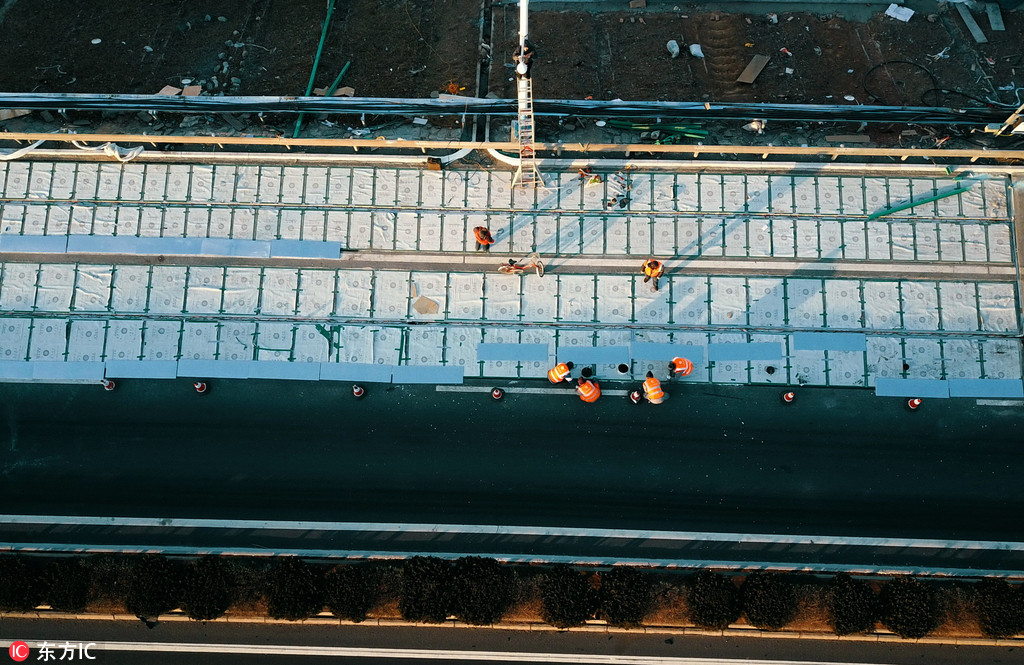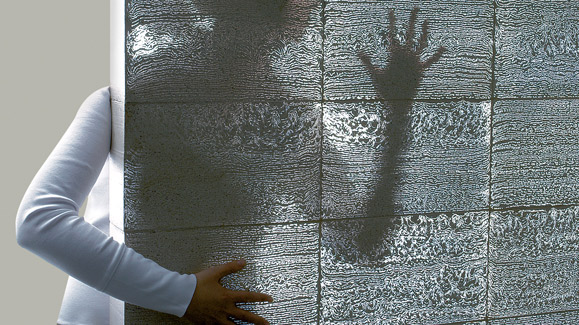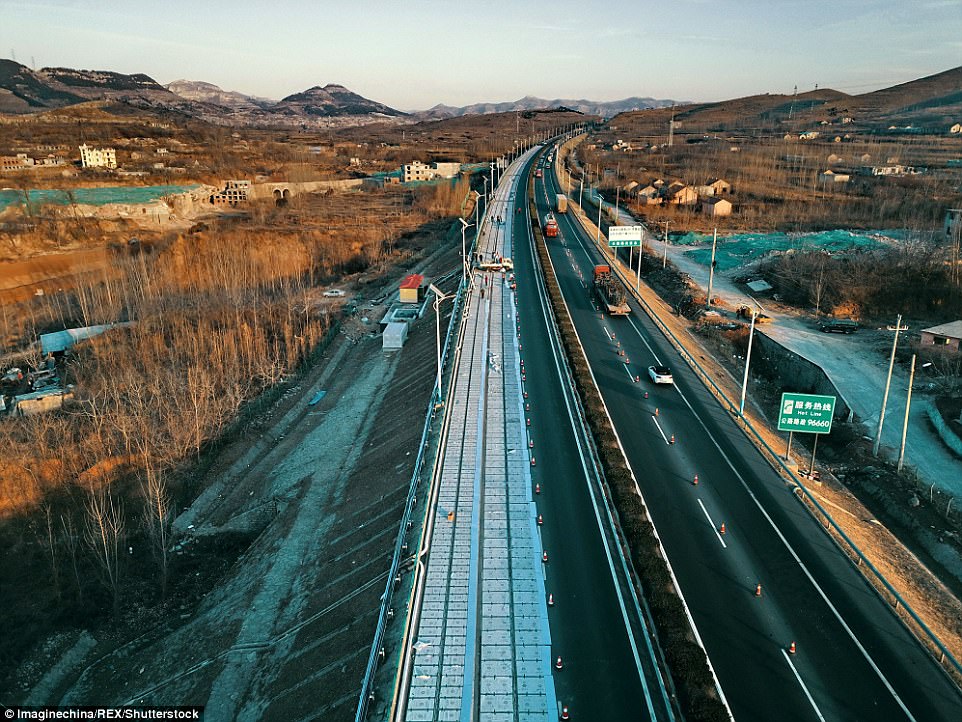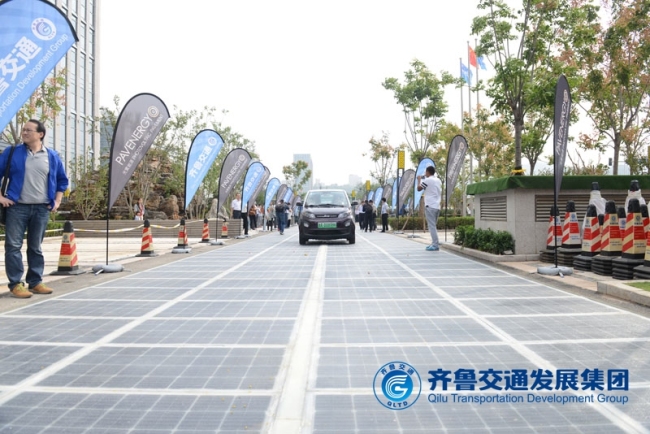
Critics have repeatedly talked about the unprofitability of laying the roadway with solar panels. A simple calculation shows that placing panels on roofs is cheaper than on roads. Nevertheless,
news about another such mega-project comes from different countries
every now and then . This time, distinguished China.
The plot with photocell length of 1.9 km is
mounted on the highway of the city of Jinan (Jinan City Expressway). The construction involves laying transparent concrete on top of solar panels. This is the second such project in China.
At the moment, the laying of all elements of the roadway is finished. Now there is an installation of network connections for connecting batteries to an electrical circuit. Workers must complete installation by the end of 2017.
 Installation of network connections for connecting batteries to an electrical circuit is performed by qualified Chinese specialists.
Installation of network connections for connecting batteries to an electrical circuit is performed by qualified Chinese specialists.Jinan is a small sub-provincial city with a population of 3.25 million people, located about 400 km south of Beijing.
"Sunshine Highway" is formed of three layers. The top layer is transparent concrete, which has structural properties similar to that of ordinary asphalt. Perhaps the world's most famous brand of transparent concrete, litracon (Litracon), invented in 2001, is used. Fiber-optic glass strands are included in the fine-grained structure of this material. As a result, the material is a solid substance penetrated by thin glass fibers.
 Transparent concrete wall litrakon
Transparent concrete wall litrakonThe price of such concrete is very high due to the technological complexity of manufacturing. However, you can make the same concrete with your own hands. This requires some simple components:
- purified water;
- dried cement mixture with fine grains of aggregate;
- fiberglass length corresponding to the thickness of the plate.
As stated in
one of the instructions on the Russian website , the biggest difficulty is to comply with the correct proportions of the components. To get the light guide structure, you should take 4% of the fiber from the total mass of the solution. It is necessary to observe the direction of laying the threads, which must lie strictly in one direction.
So it is quite likely that the Chinese have mastered the technical process and produced a litrakon on their own, and not purchased from a licensed manufacturer with a patent.

The second (central) layer is the solar panels themselves, which are designated as "carriers", that is, they account for the bulk of the traffic moving along the road. According to the calculations of Chinese engineers, the roadbed should be sufficiently reliable to withstand the weight of an average truck. Heavy trucks, probably, will not be allowed on the “sunny road”.
The bottom layer is used to isolate the solar panels from the ground.
Project developers emphasize that with the spread of electric vehicles in the solar road, you can integrate elements for wireless charging of moving car batteries. China is now
ranked first in the world in electric car sales .
Local media do not report what type of solar panels are used in construction and what is their efficiency, who are the manufacturers. Some experts argue that because of the low quality of silicon, Chinese solar panels, although cheaper, have a shorter lifetime and lower efficiency than products of Western firms that are leaders in this market. It is said that in China they have not yet mastered the methods of high-quality purification of silicon on an industrial scale.
In the photos you can see the panel in two sizes. Now they are covered with a film to protect against workers who walk on top.

The first “solar road” in China was
built in September last year in the same city of Jinan. The work was carried out by the Quilu Transportation Development Group (Quilu Transportation Development Group). It was a demonstration road with a length of only 160 meters and an area of 660 m². The road normally maintains loading, soglnechnye panels did not fail yet.
 The first "solar road" in China with a length of 160 meters opened September 29, 2016
The first "solar road" in China with a length of 160 meters opened September 29, 2016Other roads with solar panels were previously commissioned
in the Netherlands (2014, solar bike path),
in France (2016, 2,800 m²). The technology is being
tested in the USA .